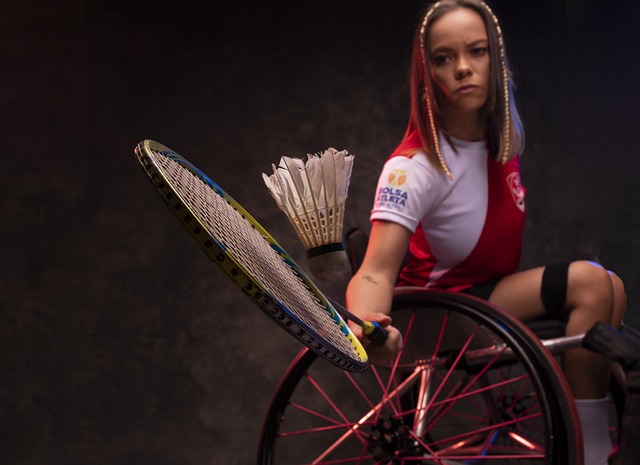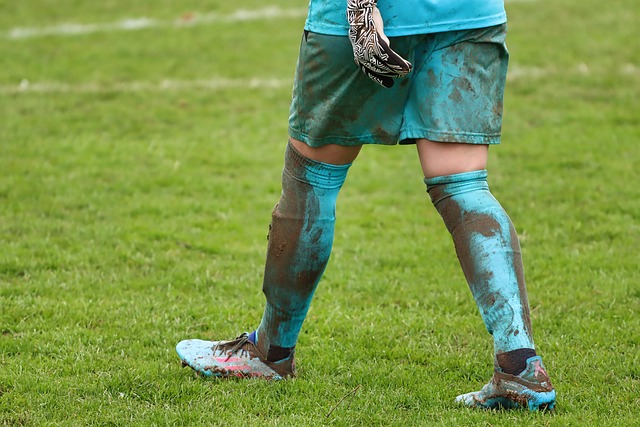Athletic injuries, influenced by individual biomechanics and training, are treated with traditional RICE methods and physical therapy. However, regenerative therapies like PRP, stem cell treatments, and tissue engineering are emerging as game-changers in athletic injury management. These advanced techniques, personalized to each athlete's needs, offer faster recovery times, reduced downtime, and improved performance compared to conventional treatments. By harnessing the body's natural healing mechanisms, regenerative medicine is revolutionizing sports medicine, providing cutting-edge solutions for conditions such as tendinopathy, ligament sprains, and muscle strains.
In the realm of athletic injury treatment, regenerative medicine is revolutionizing sports healing. This cutting-edge approach offers personalized care tailored to each athlete’s unique needs, addressing common challenges like tendon tears, muscle strains, and joint pain. By harnessing the body’s natural repair mechanisms, regenerative methods provide a game-changer for athletes seeking faster recovery and enhanced performance. The following article delves into these innovative techniques, exploring success stories that demonstrate transformative results in athletic injury treatment.
- Understanding Athletic Injuries: Common Causes and Challenges
- The Rise of Regenerative Medicine for Sports Healing
- Personalized Treatment Plans: Tailoring Care to the Athlete
- Cutting-Edge Techniques in Regenerative Athletic Care
- Success Stories: Transforming Athletes' Lives through Personalized Regeneration
Understanding Athletic Injuries: Common Causes and Challenges

Athletic injuries, while common in active individuals, can be complex and multifaceted. Understanding their causes is crucial for effective athletic injury treatment. Many factors contribute to these injuries, including sudden movements, repetitive stress, poor training practices, inadequate warm-up or cool-down routines, and underlying structural imbalances. Overuse injuries, such as tendinopathy and stress fractures, often result from prolonged or excessive physical demands without proper recovery time. Acute injuries, like sprains and strains, are typically caused by traumatic events during sports or exercises.
Challenges in athletic injury treatment arise due to the dynamic nature of these injuries. Each athlete’s biomechanics, training regimen, and overall health play significant roles in healing outcomes. Traditional treatments often involve rest, ice, compression, elevation (RICE), along with physical therapy and medication. However, regenerative methods are gaining traction for their potential to accelerate recovery without side effects. These include platelet-rich plasma (PRP) therapy, stem cell treatments, and tissue engineering, which aim to stimulate the body’s natural healing processes at a cellular level.
The Rise of Regenerative Medicine for Sports Healing

Regenerative medicine is transforming the landscape of athletic injury treatment, offering innovative approaches for sports healing that go beyond traditional methods. This emerging field leverages the body’s inherent regenerative capabilities to repair and regenerate damaged tissues, providing athletes with promising alternatives to conventional surgery or lengthy rehabilitation. The rise of regenerative techniques, such as platelet-rich plasma (PRP) therapy and stem cell treatments, reflects a growing demand for faster, more effective recovery solutions in competitive sports.
By harnessing the body’s natural healing processes, these cutting-edge methods aim to reduce inflammation, stimulate tissue growth, and accelerate the repair of athletic injuries, including tendinopathy, ligament sprains, and muscle strains. As athletes strive for peak performance, regenerative medicine presents a game-changer, enabling them to return to their sport with enhanced recovery outcomes and minimized downtime.
Personalized Treatment Plans: Tailoring Care to the Athlete

Personalized Treatment Plans: Tailoring Care to the Athlete
In the realm of athletic injury treatment, one-size-fits-all approaches are a thing of the past. Today’s advanced regenerative methods allow for highly personalized care, catering specifically to each athlete’s unique needs and conditions. By understanding the specific biomechanics, training regimens, and individual responses to injuries, healthcare professionals can design tailored treatment plans that optimize recovery and performance.
This customized approach involves assessing factors like muscle imbalances, joint mobility, and underlying causes of injuries. Advanced technologies such as motion analysis and imaging studies aid in precise diagnosis, enabling the development of targeted interventions. Whether it’s platelet-rich plasma (PRP) therapy to accelerate tissue repair or specialized exercise programs to correct imbalances, personalized treatment plans ensure athletes receive the most effective and efficient care possible, setting them up for a successful return to their sport.
Cutting-Edge Techniques in Regenerative Athletic Care

In the ever-evolving landscape of sports medicine, regenerative methods have emerged as cutting-edge techniques for athletic injury treatment. These innovative approaches focus on the body’s natural healing mechanisms by stimulating tissue regeneration and promoting rapid recovery. One such method is platelet-rich plasma (PRP) therapy, which utilizes a patient’s own blood to accelerate the healing process. PRP is rich in growth factors that encourage cell proliferation and tissue repair, making it an effective solution for various athletic injuries, including muscle strains and tendonitis.
Another advanced technique gaining traction in regenerative athletic care is mesenchymal stem cell (MSC) therapy. MSCs have the remarkable ability to differentiate into multiple cell types, such as bone, cartilage, and muscle cells, which makes them a powerful tool for repairing damaged tissues. By injecting autologous MSCs into affected areas, athletes can experience reduced inflammation, enhanced tissue regeneration, and improved functional outcomes. These cutting-edge techniques offer promising avenues for personalized athletic care, revolutionizing the way we approach athletic injury treatment and helping athletes regain their peak performance faster.
Success Stories: Transforming Athletes' Lives through Personalized Regeneration

Personalized athletic care using regenerative methods has transformed countless athletes’ lives, offering a new frontier in athletic injury treatment. Success stories abound, showcasing the power of tailored regeneration strategies. For instance, professional runners have reported significant improvements in recovery times and performance levels after implementing stem cell therapy for knee injuries, allowing them to return to competition with reduced pain and increased stamina.
Similarly, athletes suffering from chronic tendon issues have found relief through platelet-rich plasma (PRP) treatments. PRP has been effective in accelerating tissue repair and promoting collagen production, leading to faster rehabilitation and a lower risk of recurrent injuries. These success stories not only highlight the potential of regenerative medicine but also emphasize its ability to revolutionize athletic care by restoring athletes to their peak condition while minimizing the side effects often associated with traditional surgical interventions.
Personalized athletic care using regenerative methods represents a promising frontier in sports healing. By understanding common athletic injuries, leveraging cutting-edge regenerative medicine techniques, and tailoring treatment plans to individual athletes, we can significantly enhance recovery outcomes. This approach not only accelerates the return to sport but also fosters long-term performance and well-being for athletes at all levels. As research continues to evolve, the future of athletic injury treatment looks bright, offering hope for faster, more effective healing through personalized regenerative care.
